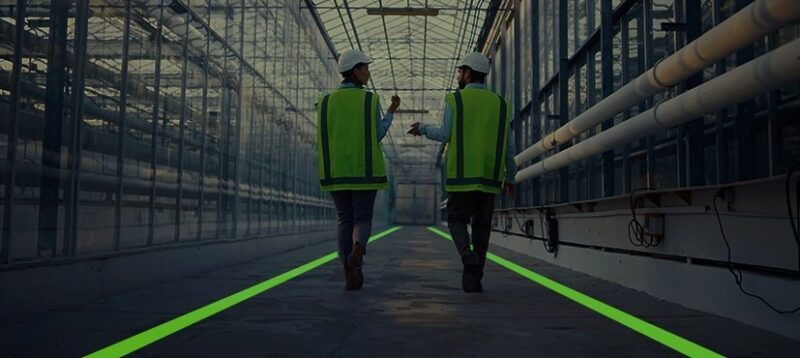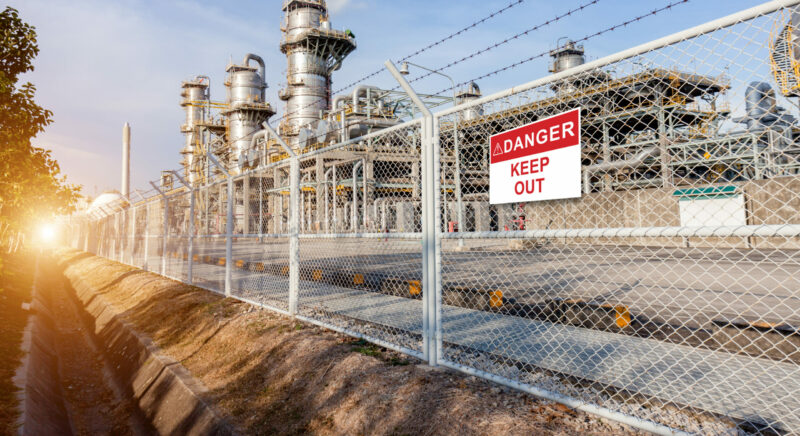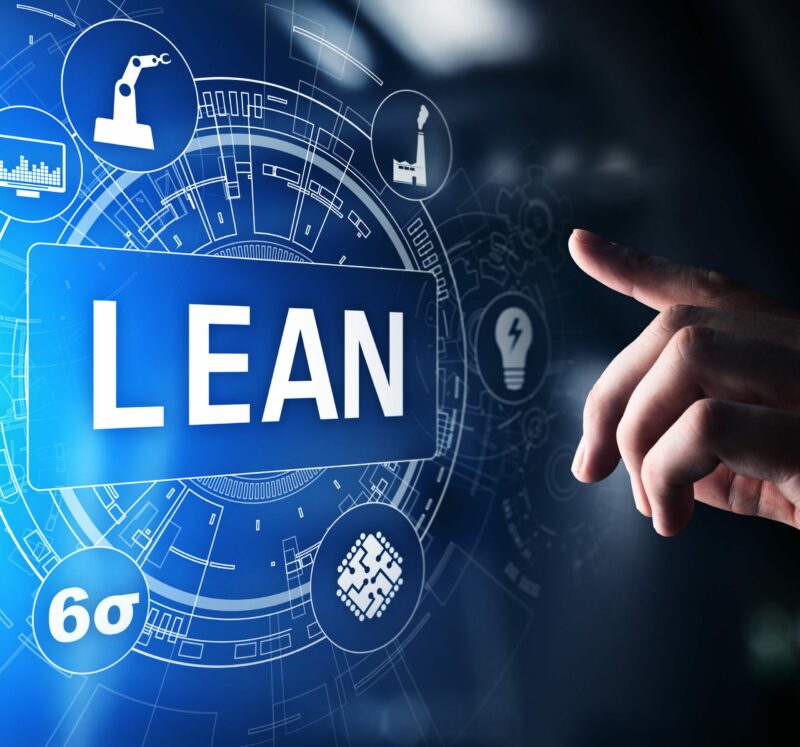Cobra Systems: The Leader in Industrial Label Makers
At Cobra Systems, safety and creativity should go hand in hand in the workplace. It is crucial to prioritize employees’ well-being while fostering an environment that encourages innovation and imagination. That’s why we are excited to introduce VnM Glow in the Dark Vinyl Tape, a revolutionary product that combines safety and creativity like never before.
When maintaining a safe working environment, using effective safety products is of utmost importance. Accidents can be prevented by implementing measures that enhance visibility and awareness. VnM Glow in the Dark Vinyl Tape is designed to do just that. With its unique glow-in-the-dark feature, this tape ensures that potential hazards are easily visible even in low-light conditions. Whether it’s marking emergency exits, highlighting obstacles, or indicating caution zones, this tape provides a reliable solution for enhancing workplace safety.
Commitment to Innovative Safety Solutions
As the premier provider of industrial label makers, we at Cobra Systems understand the significance of reliable and durable safety products. Our commitment to quality and innovation has made us a trusted name in the industry. With VnM Glow in the Dark Vinyl Tape, we continue to push boundaries and offer solutions that meet safety standards and inspire workplace creativity.
In the next part of this article, we will delve deeper into the features and benefits of VnM Glow in the Dark Vinyl Tape, showcasing how it can revolutionize safety practices in various industries.
The Importance of Glow-in-the-Dark Vinyl Tape for Enhanced Safety
Traditional safety measures often need to provide adequate visibility in low-light or dark environments. This can pose significant risks to individuals working or moving around in such conditions. However, there is a solution that can greatly enhance visibility and improve safety: glow-in-the-dark vinyl tape.
The Solution
Traditional safety measures, such as reflective strips or warning signs, rely on external light sources to be visible. These measures may not be effective in low-light or dark environments as they depend on ambient light or artificial lighting. This limitation can make it difficult for individuals to navigate their surroundings safely, increasing the chances of accidents or injuries.
Efficient Light Absorption for Enhanced Safety
Glow-in-the-dark vinyl tape, on the other hand, offers a reliable solution to this problem. It is designed to absorb and store light energy from any natural or artificial source and then emit it as soft, glowing light. This self-illuminating property makes it highly visible even in complete darkness, ensuring that potential hazards or obstacles are clearly marked.
The use of glow-in-the-dark vinyl tape can significantly improve safety in various settings. For example, in industrial workplaces where machinery or equipment may be difficult to see in low-light conditions, applying this tape to critical areas can help workers identify potential dangers and take necessary precautions. Similarly, in public spaces like staircases, hallways, or emergency exits, using glow-in-the-dark tape can guide people safely through these areas, especially during power outages or emergencies.
Selecting the Right Glow-in-the-Dark Vinyl Tape
It is important to note that not all glow-in-the-dark vinyl tapes are created equal. To ensure optimal performance and longevity, choosing high-quality tape from reputable manufacturers is crucial. Inferior products may have a weaker glow or a shorter illumination duration, compromising their effectiveness in enhancing visibility and safety.
When selecting glow-in-the-dark vinyl tape, look for features such as long-lasting glow, durability, and easy application. Additionally, consider the specific requirements of your environment to choose the appropriate tape width, color, and adhesive strength. Investing in a high-quality product will provide peace of mind, knowing that you have chosen a reliable solution for improved visibility and safety in low-light or dark conditions.
A Short Explanation:
Traditional safety measures often fall short of providing adequate visibility in low-light or dark environments. Glow-in-the-dark vinyl tape offers a reliable solution by absorbing and emitting light energy, making it highly visible even in complete darkness. Individuals can enhance visibility and improve safety in various settings by choosing high-quality tape. So, to ensure safety in low-light or dark conditions, glow-in-the-dark vinyl tape is an essential tool.
Understanding VnM Glow in the Dark Vinyl Tape
VnM Glow-in-the-Dark Vinyl Tape is a versatile and innovative product offering various features and benefits. This tape is specifically designed to provide visibility in low-light or dark environments, making it an ideal solution for safety and identification purposes.
Exceptional Durability for Challenging Environments
One of the key features of VnM Glow-in-the-Dark Vinyl Tape is its exceptional durability. This tape is made from high-quality vinyl material and is built to withstand harsh conditions and heavy use. It is resistant to abrasion, moisture, and chemicals, ensuring it remains intact and effective even in challenging environments.
Strong Adhesive Backing for Reliable Performance
The adhesive strength of VnM Glow-in-the-Dark Vinyl Tape is another standout feature. The tape is equipped with a strong adhesive backing that securely bonds to various surfaces, including metal, plastic, wood, and concrete. This ensures that the tape stays in place, providing long-lasting performance and reliability.
Sustained Illumination: Long-Lasting Glow Properties
The most impressive aspect of VnM Glow-in-the-Dark Vinyl Tape is its long-lasting glow properties. After being exposed to light, the tape absorbs and stores energy, which it then releases as a vibrant glow in the dark. This makes it highly visible and easy to locate, even in complete darkness. The tape’s glow can last for several hours, allowing for prolonged visibility and enhanced safety.
Diverse Applications Across Industries
Due to its exceptional qualities, VnM Glow-in-the-Dark Vinyl Tape finds applications in a wide range of industries. In the construction industry, it can be used to mark hazardous areas, emergency exits, and stairwells, ensuring that workers can navigate safely, even during power outages or emergencies. Similarly, the tape can be applied to machinery, switches, and control panels in manufacturing facilities to provide clear visibility in dimly lit areas.
Beyond industrial settings, VnM Glow-in-the-Dark Vinyl Tape also has applications in recreational spaces such as amusement parks, theaters, and nightclubs. It can be used to mark pathways, stairs, and emergency exits, enhancing safety for visitors in low-light conditions.
A Short Explanation:
Traditional safety measures often fall short of providing adequate visibility in low-light or dark environments. Glow-in-the-dark vinyl tape offers a reliable solution by absorbing and emitting light energy, making it highly visible even in complete darkness. Individuals can enhance visibility and improve safety in various settings by choosing high-quality tape. So, to ensure safety in low-light or dark conditions, glow-in-the-dark vinyl tape is an essential tool.
Applications of VnM Glow in the Dark Vinyl Tape
VnM Glow-in-the-Dark Vinyl Tape is a versatile product that finds applications in various industries. Its unique properties make it an effective solution for a wide range of use cases and scenarios. Let’s explore some of the industries where this tape can be utilized effectively and discuss specific examples of its benefits.
Safety and Emergency Services
In safety and emergency services, VnM Glow in the Dark Vinyl Tape plays a crucial role in enhancing visibility and ensuring the safety of individuals. It can be used to mark emergency exits, staircases, handrails, and other critical areas in buildings. The tape helps people navigate through spaces during power outages or low-light situations by providing a glowing effect in the dark. This makes it an invaluable tool for firefighters, paramedics, and other emergency responders.
Manufacturing and Warehousing
In manufacturing and warehousing facilities, VnM Glow-in-the-Dark Vinyl Tape serves as a reliable way to find solutions. It can be applied to floors, walls, and equipment to create clear pathways, designate hazardous areas, and indicate safety precautions. The tape’s glow-in-the-dark feature ensures workers can quickly identify important markers even in dimly lit environments. This improves efficiency, reduces accidents, and enhances overall workplace safety.
Recreation and Entertainment
VnM Glow-in-the-Dark Vinyl Tape also finds applications in the recreation and entertainment industry. It can be used to create captivating visual effects in amusement parks, theaters, and event venues. By strategically placing the tape on props, stages, and walkways, designers can enhance the overall experience and safety for visitors. Whether it’s creating a magical atmosphere or guiding guests through a haunted house, the tape’s glow adds an element of excitement and intrigue.
Education and Childcare
In educational institutions and childcare centers, VnM Glow-in-the-Dark Vinyl Tape can be utilized to create interactive learning environments. Teachers can engage students in a fun and interactive way by using tape to mark educational pathways, shapes, or letters. The glowing effect of the tape adds an element of surprise and encourages children to explore and learn. Additionally, it can be used for safety purposes, such as marking emergency exits or highlighting potential hazards.
A Short Explanation:
VnM Glow-in-the-Dark Vinyl Tape is a highly adaptable product that can be utilized effectively in various industries. Its ability to enhance visibility, improve safety, and create captivating visual effects makes it a valuable tool in safety and emergency services, manufacturing and warehousing, recreation and entertainment, education and childcare, as well as home improvement and decor. With its versatility and ability to adapt to different surfaces and environments, this tape proves to be a reliable solution for a wide range of use cases and scenarios.
Improving Workplace Safety with VnM Glow-in-the-Dark Vinyl Tape
Incorporating VnM Glow-in-the-Dark Vinyl Tape into safety protocols can significantly enhance workplace safety by reducing accidents and injuries. This innovative tape is designed to emit a luminous glow in low-light conditions, making it highly visible and effective in guiding employees to safety.
One of the key benefits of using VnM Glow-in-the-Dark Vinyl Tape is its ability to mark hazards. By applying this tape to potential danger zones or areas with high-risk equipment, employers can effectively alert employees to exercise caution. In a manufacturing facility, the tape can be used to mark the boundaries around machinery or hazardous materials, ensuring that employees are aware of the potential risks and take appropriate precautions.
Another important application of VnM Glow-in-the-Dark Vinyl Tape is marking emergency exits and escape routes. Visibility can be severely compromised during emergencies such as fires or power outages. However, with the luminous glow emitted by this tape, employees can easily locate emergency exits and escape routes, even in complete darkness. This facilitates a swift evacuation and minimizes the risk of panic and confusion during critical situations.
Furthermore, incorporating VnM Glow-in-the-Dark Vinyl Tape into safety protocols contributes to compliance with safety regulations and standards. Many regulatory bodies require businesses to have clear markings for hazards, emergency exits, and escape routes. Employers can ensure that their workplace meets these requirements by utilizing this tape, avoiding potential penalties and legal issues. Additionally, it demonstrates a commitment to employee well-being and safety, fostering a positive work environment.
A Short Explanation:
VnM Glow in the Dark Vinyl Tape is a valuable tool for enhancing workplace safety. Its ability to mark hazards, emergency exits, and escape routes improves visibility in low-light conditions, reducing the likelihood of accidents and injuries.
Promoting Creativity with VnM Glow in the Dark Vinyl Tape
VnM Glow-in-the-Dark Vinyl Tape is a practical tool for workplace safety and offers a unique opportunity to promote creativity and innovation. By harnessing the power of glow-in-the-dark technology, this versatile tape can be used in a variety of creative ways to enhance workplace safety applications.
Visibility Enhancement in Challenging Environments
One of the key benefits of VnM Glow-in-the-Dark Vinyl Tape is its ability to provide visibility in low-light or dark environments. This makes it an ideal solution for industries that operate during nighttime hours or in areas with limited lighting. By applying this tape to various surfaces, such as floors, walls, or equipment, workers can easily navigate their surroundings and identify potential hazards even in the absence of adequate lighting.
Practical Applications in Safety Markings
VnM Glow-in-the-Dark Vinyl Tape can also be utilized to create visually appealing safety markings and signage. Its vibrant glow can be used to highlight emergency exits, fire extinguishers, or other important safety equipment. By incorporating this tape into safety protocols, businesses can ensure compliance with safety regulations and add creativity and visual interest to their workspaces.
Wide-reaching Impact: Versatility Across Industries
Industries across the board can benefit from the use of VnM Glow-in-the-Dark Vinyl Tape for workplace safety. Manufacturing facilities, warehouses, construction sites, and transportation companies are just a few examples of industries where this tape can make a significant impact. By improving visibility and providing clear safety markings, this tape helps reduce the risk of accidents and injuries in these high-risk environments.
Promoting Safety Awareness in Educational Environments
Furthermore, VnM Glow-in-the-Dark Vinyl Tape can also be used in educational settings, such as schools or universities, to promote safety awareness among students and staff. By creating eye-catching safety signs or marking pathways, institutions can effectively communicate important safety information while adding a touch of creativity to their premises.
A Short Explanation:
VnM Glow-in-the-Dark Vinyl Tape offers a unique opportunity to promote creativity while enhancing workplace safety. Its ability to provide visibility in low-light environments and its versatility in creating visually appealing safety markings make it an invaluable tool for various industries. By incorporating this tape into their safety protocols, businesses can improve safety standards and create a visually engaging work environment.
Advantages and Installation Guide
In industrial operations, the importance of a durable labeling solution that withstands harsh conditions while ensuring visibility and longevity is undeniable. Let’s explore the essential factors to consider when choosing a labeling tape for industrial applications.
Factors to Consider
Before making a decision, it’s essential to evaluate the properties of the desired vinyl tape. These factors will help you determine which option is best suited to your requirements:
- Durability: In an industrial setting, labels must withstand harsh conditions such as extreme temperatures, moisture, and chemicals. Look for a label maker that offers high durability to ensure longevity.
- Adhesive Strength: Labels should adhere firmly to various surfaces, including metal, plastic, and concrete. Opt for a label maker with strong adhesive properties to prevent peeling or detachment.
- Glow Intensity: If visibility in low-light environments is a concern, consider a label maker that offers glow-in-the-dark capabilities. This feature ensures that labels remain visible even in dark or dimly lit areas.
The VnM Glow-in-the-Dark Vinyl Tape Advantage
When it comes to meeting these criteria, the VnMGlow-in-the-Dark Vinyl Tape stands out as an excellent choice. Here’s why:
Durability
The VnM Glow-in-the-Dark Vinyl Tape is designed to withstand tough industrial conditions. It is resistant to abrasion, moisture, and chemicals, ensuring that your labels stay intact and legible for an extended period.
Adhesive Strength
With its strong adhesive backing, this tape adheres securely to a wide range of surfaces. Whether you need to label equipment, machinery, or storage containers, the VnM Glow-in-the-Dark Vinyl Tape will stay in place.
Glow Intensity
The VnM Glow-in-the-Dark Vinyl Tape offers exceptional glow intensity, making it ideal for environments with low lighting. Its bright and long-lasting glow ensures that labels remain visible, enhancing safety and efficiency.
To ensure a successful installation, follow these step-by-step instructions:
Prepare the Surface
Clean the surface where you plan to apply the tape. Make sure it is free from dust, dirt, and any other debris that may hinder adhesion.
Measure and Cut
Measure the length of tape needed for your project and cut it accordingly. Use a sharp pair of scissors or a utility knife for a clean cut.
Peel off the Backing
Carefully peel off the backing paper from the tape, exposing the adhesive side.
Apply the Tape
Align the tape with the desired location on the surface and press it firmly into place. Smooth out any air bubbles or wrinkles using a squeegee or your fingers.
Activate the Glow
Expose the tape to a light source for a few minutes to activate its glow-in-the-dark properties. The longer you expose it to light, the brighter and longer-lasting the glow will be.
Test the Glow
Turn off the lights and observe the tape’s glow. If you are satisfied with the brightness, your installation is complete.
Maintenance Tips for VnM Glow-in-the-Dark Vinyl Tape
To ensure the longevity and optimal performance, follow these maintenance tips:
- Regular Cleaning: Periodically clean the tape using a mild detergent and a soft cloth. Avoid using abrasive cleaners or scrub brushes, as they may damage the tape’s surface.
- Avoid Harsh Chemicals: Do not expose the tape to harsh chemicals, solvents, or cleaning agents. These substances can degrade the tape’s glow-in-the-dark properties and cause discoloration.
- Protect from Physical Damage: Take precautions to prevent physical damage to the tape. Avoid scratching or scraping it with sharp objects, as this can compromise its glow and overall appearance.
- Avoid Extreme Temperatures: This tape performs best within a temperature range of 50°F to 90°F (10°C to 32°C). Avoid exposing the tape to extreme heat or cold, as it may affect its adhesive properties.
- Inspect for Wear and Tear: Regularly inspect the tape for any signs of wear and tear. If you notice any peeling, cracking, or loss of glow, consider replacing the tape to maintain optimal performance.
Troubleshooting Common Challenges
If you encounter any challenges during the installation, here are some troubleshooting tips:
- Poor Adhesion: If the tape is not sticking properly to the surface, ensure that the surface is clean and free from any contaminants. You can also try applying gentle heat using a hairdryer to activate the adhesive.
- Dim Glow: If the tape’s glow appears dim, make sure it has been exposed to sufficient light for an extended period. Increase the exposure time to enhance the brightness of the glow.
- Discoloration: If the tape shows signs of discoloration, it may have been exposed to harsh chemicals or excessive heat. Replace the tape to restore its original appearance and performance.
By following these installation, maintenance, and troubleshooting tips, you can enjoy the long-lasting glow and performance of VnM Glow-in-the-Dark Vinyl Tape.
Conclusion
In conclusion, VnM Glow-in-the-Dark Vinyl Tape offers a multitude of benefits for both safety and creativity. Its high visibility in the dark ensures that potential hazards are easily identified, reducing the risk of accidents and injuries. Additionally, its vibrant glow adds a touch of creativity to any space, making it perfect for artistic projects or decorative purposes.
We encourage you to explore the possibilities of incorporating illuminating tape into your workplace. Whether it’s marking emergency exits, highlighting walkways, or creating eye-catching designs, this product can significantly enhance safety measures while adding a unique aesthetic appeal.
As a leading provider of safety solutions, Cobra Systems has extensive expertise in delivering high-quality products that meet the highest standards. You can trust that you are investing in a reliable, durable solution that will stand the test of time.
Take action today and reach out to Cobra Systems to learn more about how VnM Glow-in-the-Dark Vinyl Tape can benefit your workplace. Take advantage of the opportunity to enhance safety and unleash your creativity with this innovative product.
Check out our VnM Glow-in-the-Dark Vinyl Tape product today, or contact our team directly to get started.
You Might Also Like:
How to Implement 5s in the Workplace?
Do You Need an Industrial Printer for Your Workplace?
5 Reasons Why Safety Signage is Important for Your Business
What is 5S: Ultimate Guide To The 5S System
How Visual Workplaces Can Enhance Safety and Efficiency








